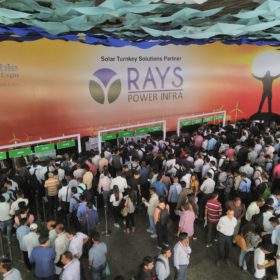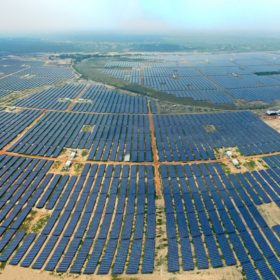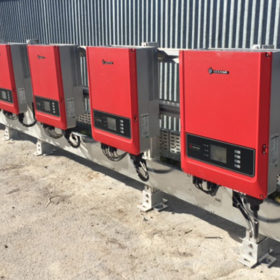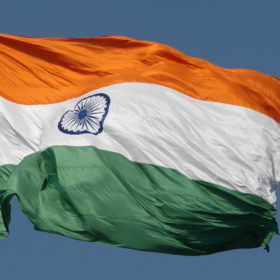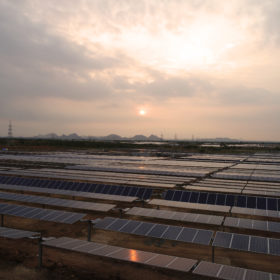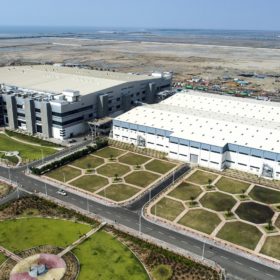Memo to the EU: ‘India is the largest clean energy market in the world that will operate on market-friendly principles’
The second day of REI in Greater Noida continues to attract large numbers of delegates, with the exhibition halls crowded, and conferences well attended. During an EU-Indian session this morning, India’s CEEW boldly stated that India is the largest clean energy market in the world, which will operate on market-friendly principles. Overall, CEO, Arunabha Ghosh outlined four basic vows needed for the Indian renewables market to grow; and said decarbonzation of the industrial sector should be the next big focus for renewables.
REI 2018 opens its doors with a bang
The 12th Renewable Energy India (REI) Expo opened its doors today; the booming music and bright sunshine mirroring India’s ambitious goals to become the biggest RE market in the world. In the opening conference, the government’s commitment to renewables was underlined, while BNEF said the country will have one of the highest penetrations of solar and wind, globally, by 2050. Companies are also starting to look to India for manufacturing opportunities, although the landscape is still filled with uncertainty.
Top 3 developers commissioned one-fourth of utility-scale PV projects
Of the total 9,538 MW of solar capacity commissioned between October 2017 and September 2018, Adani bagged the lion’s share at 11%, followed by Acme (7.5%) and Renew Power (7.3%), finds Bridge to India. The analyst company also tracks tariff trends between 2016 and now.
Interview: GoodWe talks IPOs, policy changes and tripling production capacity
In an interview with pv magazine, vice president of GoodWe, Ron Shen, talks about the company’s plans for Germany, Spain, Africa and India, in addition to its goal to triple production capacity to 15 GW in China. He also discusses the effect of China’s 31/5 policy change, and plans for an initial public offering (IPO).
India’s solar energy capacity is growing
India’s electricity sector is transforming rapidly. A 50% decline in wind and solar tariffs since 2016 means renewable energy is now the lowest cost source of new generation. This has turned the established order in India on its head.
Fresh blow for PV with 18% GST rate
The decision to tax the ‘service’ provided to solar developers at the full rate comes days after the Supreme Court upheld the federal government’s imposition of a 25% safeguarding duty on Chinese and Malaysian panels.
Making India’s solar sector resource efficient
By adopting resource efficiency measures, the Indian PV solar manufacturing sector can reduce its material requirement from an estimated 12 million tons to 8.2 million tons by 2030. The resource-efficient approach will also increase efficiency to more than 30% from 6% in 2018, according to a study conducted under the European Union’s Resource Efficiency Initiative (EU-REI) Project.
SECI extends 3 GW manufacturing-linked solar auction by two weeks
After a pre-bid meeting with solar power developers on September 6, India’s Solar Energy Corporation of India (SECI) is looking to amend the tender document, which it hopes to upload to its website in the coming days, following approval from the ministry, according to a SECI spokesperson.
Suzlon partners with CLP for 70 MW solar capacity in Maharashtra
CLP India will acquire a 49% stake in Suzlon’s 50 MW and 20 MW solar projects in Dhule, Maharashtra. These two projects were won by Suzlon through competitive bidding in auctions by the Solar Energy Corporation of India Limited (SECI). As per the power purchase agreement signed, the tariff rate is fixed for 25 years at 4.115 INR/kWh for 20 MW and 3.66 INR/kWh for 50 MW.
Industry reacts to 25% duty; developers to cough up extra $ 72 million
From cheer to gloom, the Indian solar industry has had mixed reactions to the Supreme Court’s interim order lifting the stay on imposition of 25% safeguard duty on imported solar cells and modules.

